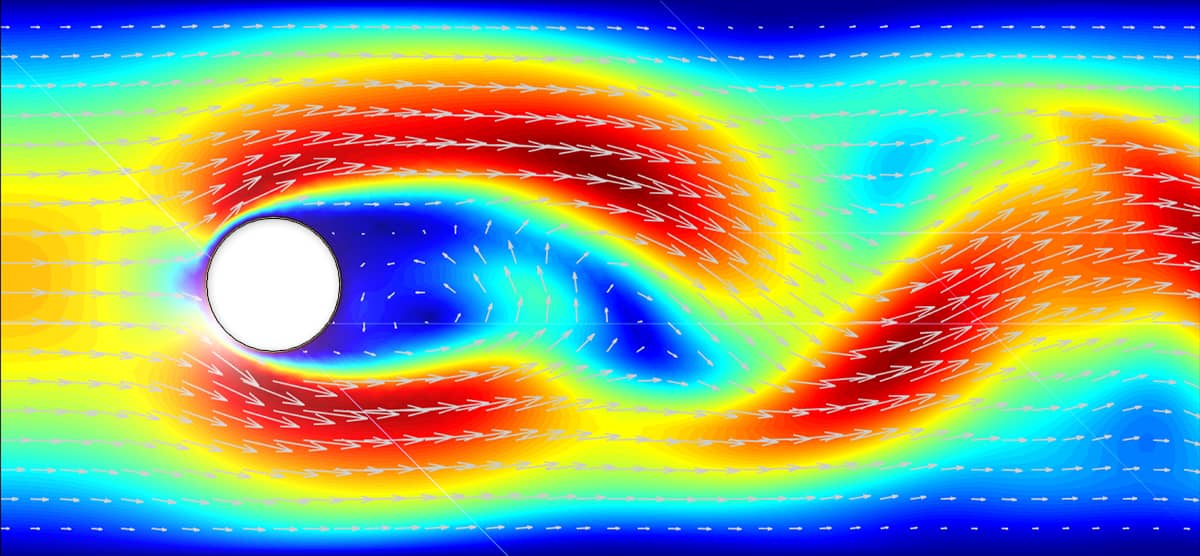Benchmark problem for stationary, laminar, and incompressible flow around a cylinder. Although it is not possible to derive an analytical solution to this test case, very accurate numerical solutions to benchmark reference quantities have been established for the pressure difference, drag, and lift coefficient [1],[2].
The test configuration considers a solid cylinder centered at (0.2, 0.2) with diameter d = 0.1 in a l = 2.2 by h = 0.41 rectangular channel. The fluid is assumed to have a constant density equal to 1 and viscosity 0.001. A fully developed parabolic velocity profile is prescribed at the inlet, u(0,y) = (4umaxy(h-y)/h2, 0), with a maximum velocity of umax = 0.3. This results in the mean velocity umean = 2 / 3umax = 0.2 and laminar flow with Reynolds number Re = ρumeand/µ = 20.
As the fluid is considered incompressible the problem is governed by the Navier-Stokes equations. That is,
\[ \left\{\begin{align} \rho\left( \frac{\partial\mathbf{u}}{\partial t} + (\mathbf{u}\cdot\nabla)\mathbf{u}\right) - \nabla\cdot(\mu(\nabla\mathbf{u}+\nabla\mathbf{u}^T)) + p &= \mathbf{F} \\\\ \nabla\cdot\mathbf{u} &= 0 \end{align}\right. \]
where in this case the time dependent term can be neglected. The benchmark quantities that should be computed include the pressure difference between the front and rear of the cylinder $\Delta p = p(0.15,0.2) - p(0.25,0.2)$, and the coefficients of drag $c_d$ and lift $c_l$, defined as
$$ c_d = \frac{2F_d}{\rho U_{mean}^{2} D} \qquad\qquad c_l = \frac{2F_l}{\rho U_{mean}^{2} D} $$
The drag and lift forces, $F_d$ and $F_l$, can be computed as
$$ F_d = \phantom{-}\int_S \left( \mu\frac{\partial\mathbf{u}_{\tau}(t)}{\partial n}n_y-pn_x \right) dS,\qquad F_l = -\int_S \left( \mu\frac{\partial\mathbf{u}_{\tau}(t)}{\partial n}n_x+pn_y \right) dS $$
where $\mathbf{u}_{\tau}$ is the velocity in the tangential direction $tau = (n_y, -n_x, 0)^T$.
This model is available as an automated tutorial by selecting Model Examples and Tutorials… > Fluid Dynamics > Flow Around a Cylinder from the File menu, and also as the MATLAB simulation m-script example ex_navierstokes3. Step-by-step and video tutorial instructions to set up and run this model are linked below.
References
[1] John V, Matthies G. Higher-order finite element discretizations in a benchmark problem for incompressible flows. International Journal for Numerical Methods in Fluids 2001.
[2] Nabh G. On higher order methods for the stationary incompressible Navier-Stokes equations. PhD Thesis, Universitaet Heidelberg, 1998.
